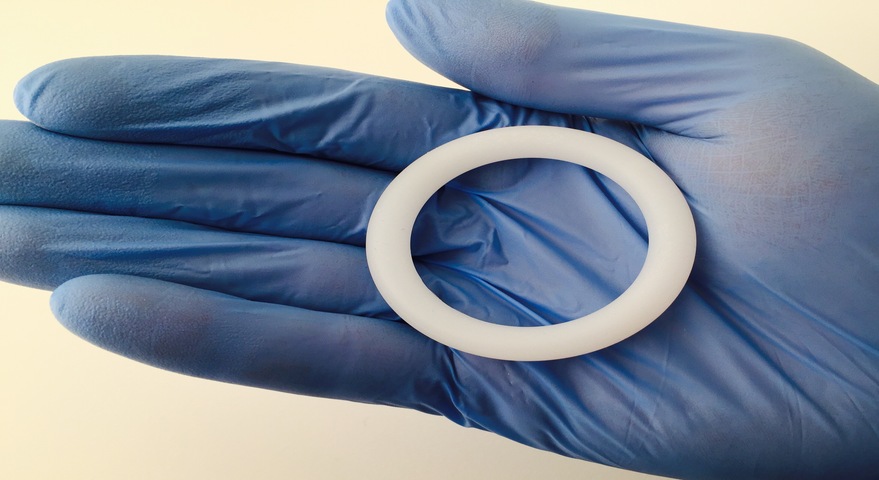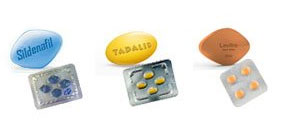NuvaRing FAQs: How To Use It? How Does It Work? And, More

What Is NuvaRing?
NuvaRing is one of the most famous methods of female contraception available today. It is a vaginal ring made of soft plastic. Small and flexible, it is extremely easy to use. This article discusses everything from how to use NuvaRing, its potential risks, some frequently asked questions, and much more.
This prescribed monthly contraception only requires self-administration. You can insert it and remove it however you feel comfortable.
The ring releases progesterone and estrogen in the vagina. They are released in small amounts over a period of 3 weeks. To allow periods to occur, the vaginal ring should be removed in the fourth week.
How To Insert NuvaRing?
Inserting NuvaRing can be quite a task, but once in place, it sits comfortably for 3 weeks.
- Step 1. Wash your hands thoroughly with soap and water.
- Step 2. Find a comfortable position like squatting, resting on your back, or standing with one leg up.
- Step 3. Remove the ring from the packaging (remember to secure the packaging in a safe place to discard the ring later).
- Step 4. Separate your labia with one hand.
- Step 5. Tweak the ring between your forefinger and thumb of the other hand.
- Step 6. Insert the ring in your vagina and push it as far as possible.
In case you feel discomfort after insertion, try pushing the ring deeper. A tampon-like applicator that comes with NuvaRing can help you with the placement of the ring.
It is impossible for NuvaRing to get lost in the vagina. However, some women have reported cases of pushing the ring too far and into the bladder. If you cannot find the ring in your vagina and feel immense pain, contact a health care provider immediately.
How To Remove NuvaRing?
You will ideally need to remove the NuvaRing after 3 weeks (21 days).
- Step 1. Wash your hands thoroughly with soap and water.
- Step 2. Hook your forefinger on the edge of the ring or grab the ring between your forefinger and middle finger.
- Step 3. Smoothly pull it out of your vagina.
- Step 4. Do not flush NuvaRing. Discard it in the re-sealable foil it came in.
Keep kids and pets away from the discarded ring. Your menstrual cycle should start 2 to 3 days after removing the ring. One week later, restart the process.
In case the NuvaRing has fallen out, insert it again using warm water within 3 hours. This usually happens due to improper insertion in the first place.
How Does NuvaRing Work?
NuvaRing contains similar hormones as contraceptive pills. Progesterone and estrogen are two hormones that can prevent a pregnancy. Once the NuvaRing is set in place, it releases these hormones in small numbers for three weeks. They prevent a pregnancy in the following ways:
- Suppresses ovulation: Progesterone and estrogen prevent your ovaries from releasing any eggs (ovulation). Since there are no eggs, the sperm will have nothing to fertilize, hence preventing pregnancy.
- Thicker cervical mucus: The cervix inside the vagina produces mucus. These hormones make the consistency of mucus thicker. This makes it harder for the sperm to reach the egg.
- Thinner endometrium: The endometrium is the inner lining of the uterus. After fertilization, the egg attaches itself to this lining for nourishment and growth. Progesterone and estrogen make the endometrium thinner. This further reduces the risk of a pregnancy, since even if an egg does get fertilized it will not receive proper condition for growth.
Side-effects Of NuvaRing
Some side effects of using NuvaRing are extremely rare. Though rare, they can still be extremely severe if experienced. Call your health care provider immediately in case you experience any of the following symptoms:
- Slurred speech or difficulty speaking
- Vision or balance issues
- Chest pain
- Shortness of breath
- Skin rashes
- Dizziness
- Jaundice (yellowing of eyes and skin)
- One side of the body becomes numb or weak
- Painful and warm sensations in one or both legs
- Foul vaginal odor
Listed below are some of the most common side effects of using NuvaRing. They usually subside within a short period of time and are not that severe.
- Headaches
- Sudden mood changes
- Low sex drive
- Excessive vaginal discharge (wetness) or irritation
- Cervical pain or irritation
- Extremely painful menstrual cramps
- Mastalgia (breast pain)
- Breast tenderness or soreness
- Skin issues
- Bloating
- Changes in the menstrual cycle
- Vaginal spotting
If these side-effects persist for an unusually long time, consult a health care provider immediately.
Risks Of NuvaRing
Apart from the side-effects mentioned above, some exceptionally rare risks come with using a contraceptive like the NuvaRing. Usually, the benefits that this device comes with outweigh the risks. Moreover, the chances of one experiencing these risks are tremendously low.
- Blood clots: People who are prone to blood clots or have experienced them in the past are advised against NuvaRing. It can lead to an increase in the frequency of blood clots in some cases. These clots can happen in a vein or an artery. Using this product in such a case can lead to complications like a stroke or a heart attack.
- Cancer: Experts suggest that a vaginal ring slightly increases the risk of developing breast cancer. This risk ideally fades over time after you have stopped using it. Chronic use of estrogen and progesterone hormone contraceptives (like NuvaRing) has also been linked to a higher risk of cervical cancer.
- Others: Some other serious risks include:
- Toxic shock syndrome (TSS)
- Allergic reaction
- Liver issues
- Gallbladder issues
- High blood pressure
- Angioedema (in case of a family history)
It is crucial to discuss all the risks and benefits suitable for your circumstances before choosing the right contraception for you. Talk to a medical health professional for the same.
Common NuvaRing FAQs
This section answers some of the most commonly asked questions about NuvaRing.
1. Does NuvaRing protect against sexually transmitted infections (STIs)?
No, NuvaRing does not provide protection against STDs. No other contraception than a male condom can provide better protection against STDs.
2. Will my partner or I be able to feel the NuvaRing during sexual intercourse?
Your partner might be able to feel NuvaRing during sex. However, over 90 percent of people reported that it does not bother them. You should ideally not feel it if it is inserted properly.
3. Is it okay to remove the NuvaRing before sex?
Yes, you can remove the NuvaRing while having sex. But do not remove it more than one time between 24 hours. Re-insert it within 3 hours and remember to wash it with warm water before re-insertion.
4. Can I use NuvaRing if I am breastfeeding?
Do not use NuvaRing if you are currently breastfeeding. This is because the hormones it releases affect breast milk. You can start using it again after the baby is at least 3 weeks old. Check with a healthcare professional to ensure maximum safety.
5. Is It Safe To Buy NuvaRing Online?
Yes, it is totally safe to buy NuvaRing generic online; as long as you buy it from a safe website.
Conclusion
Now that you know how to use NuvaRing, how it works, and everything else about it, discuss with a doctor whether you must use it or not. It is important to consult a health care provider before choosing the best contraceptive for you. They can provide you with a method suitable to your needs and circumstances.
December 19, 2020 Sam Bell











Comments